Abstract
Crude cell-free extracts of d-glucarate-grown cells of Bacillus megaterium converted d-glucarate to α-keto-β-deoxy-d-glucarate (KDG). Charcoal-treated cell-free extracts or partially purified enzyme preparations converted KDG to an intermediate which was isolated and identified as 2,5-diketoadipate (DKA). This compound was synthesized, and the cell-free extracts of d-glucarate grown cells were found to catalyze the reduction of nicotinamide adenine dinucleotide (NAD) in its presence. In the absence of NAD, the same enzyme preparation catalyzed the decarboxylation of the DKA to α-ketoglutarate semialdehyde (KGS), whereas in the presence of NAD the KGS was subsequently oxidized to α-ketoglutarate by α-ketoglutarate semialdehyde dehydrogenase. Since galactarate-grown B. megaterium contains a galactarate dehydrase forming KDG, the complete pathway for the metabolism of d-glucarate or galactarate to α-ketoglutarate and CO2 is now known in a gram-positive bacterium.
Full text
PDF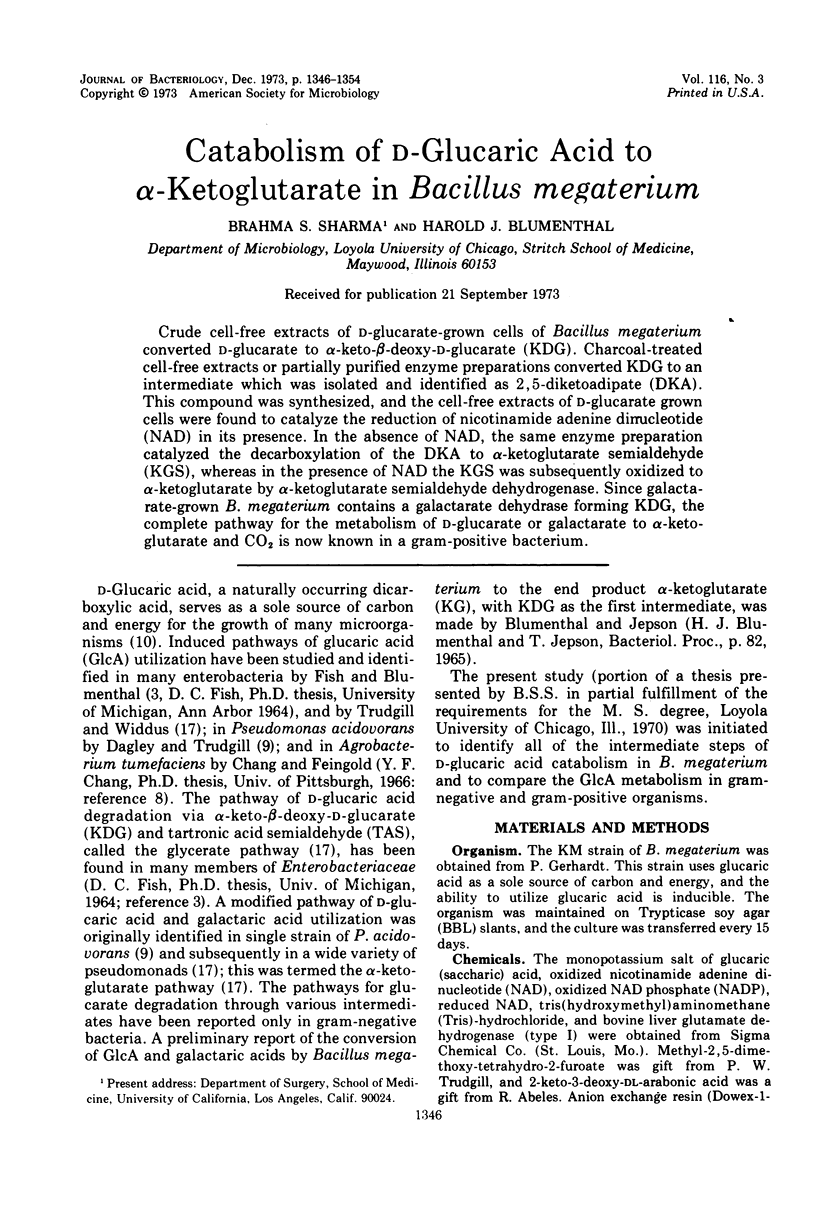
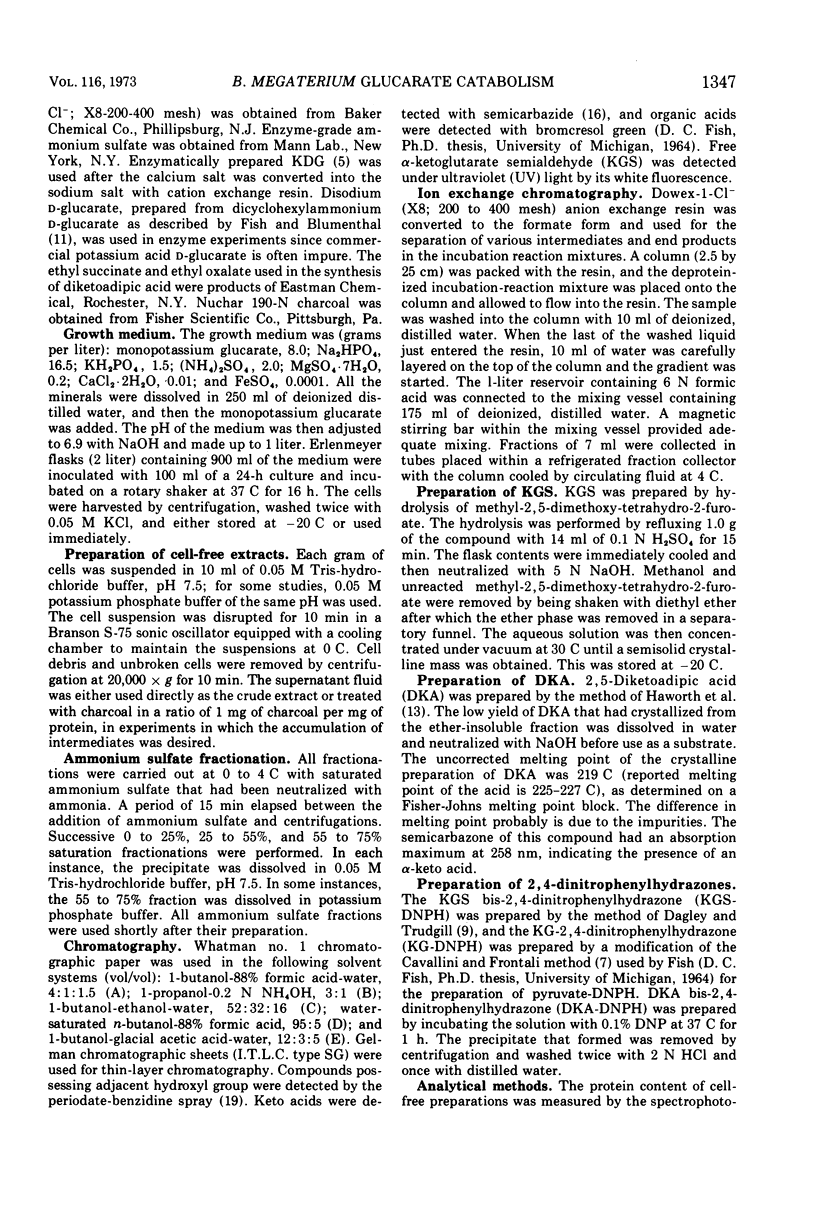
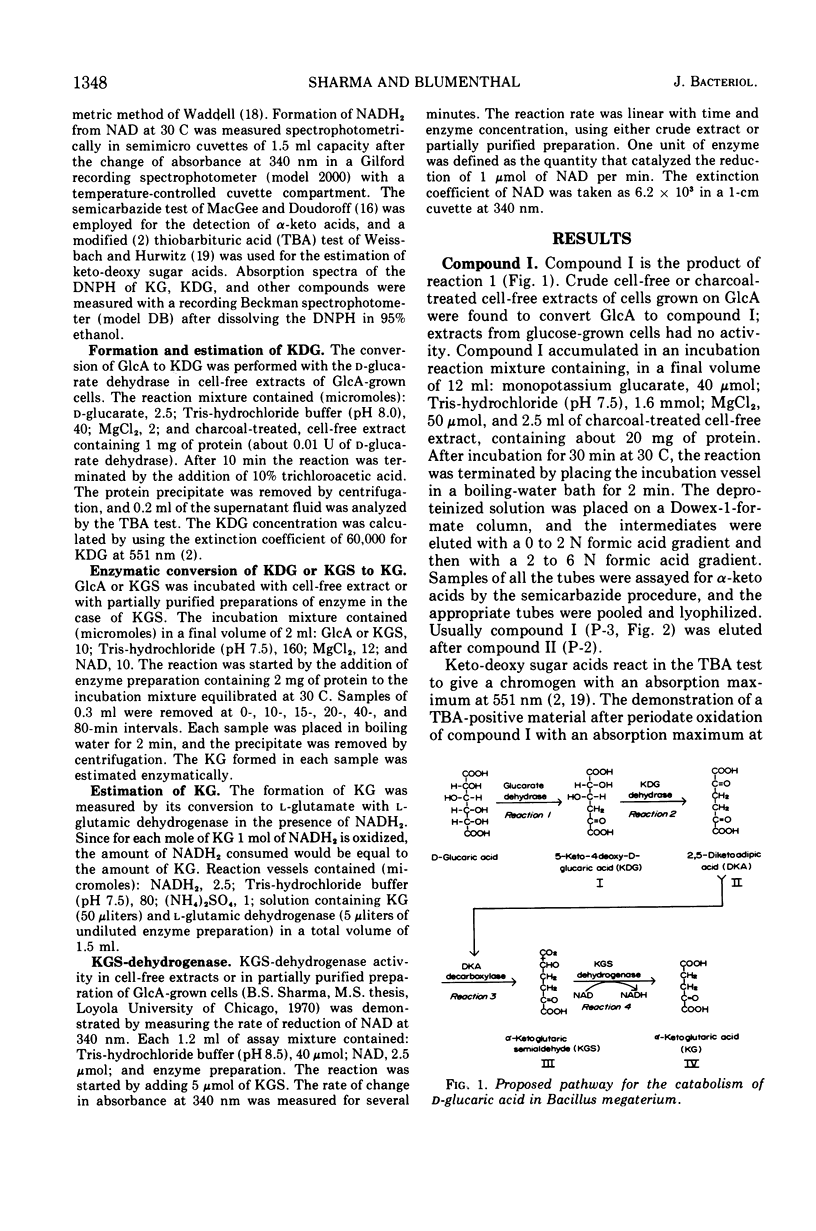

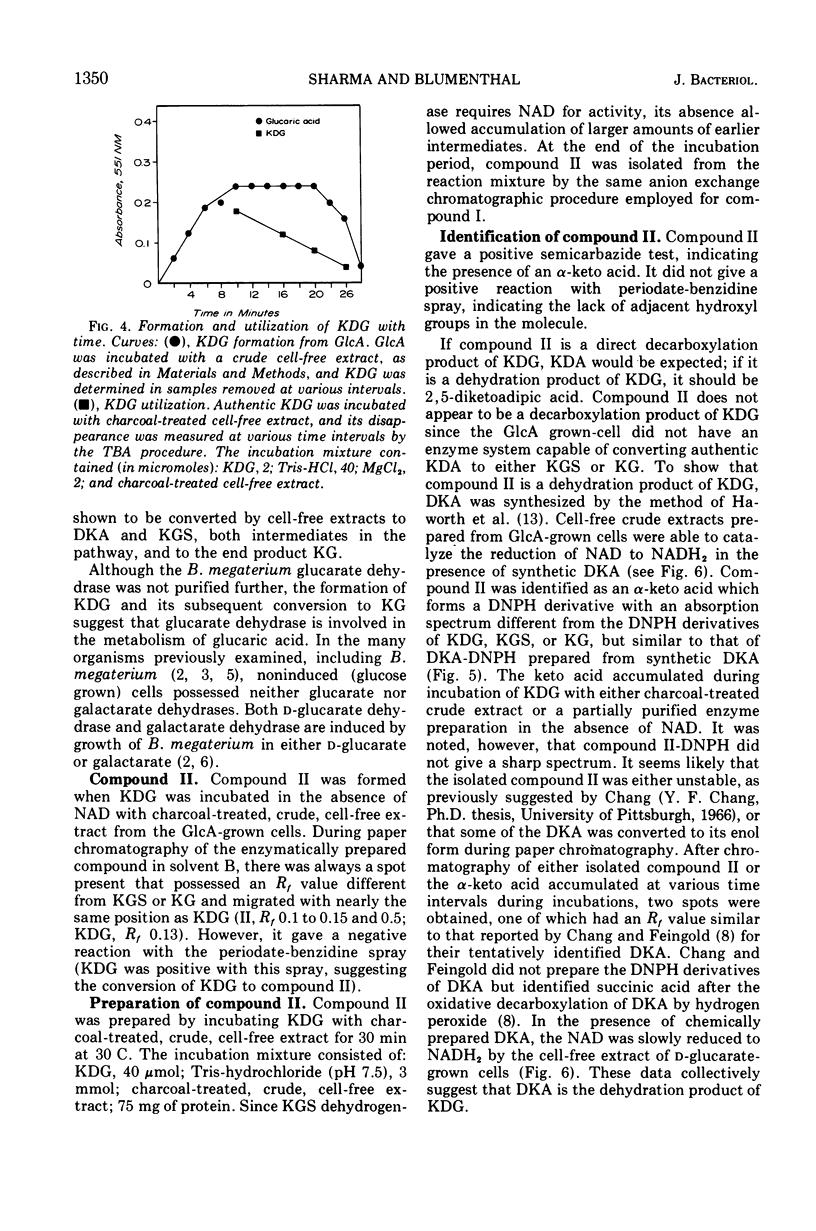
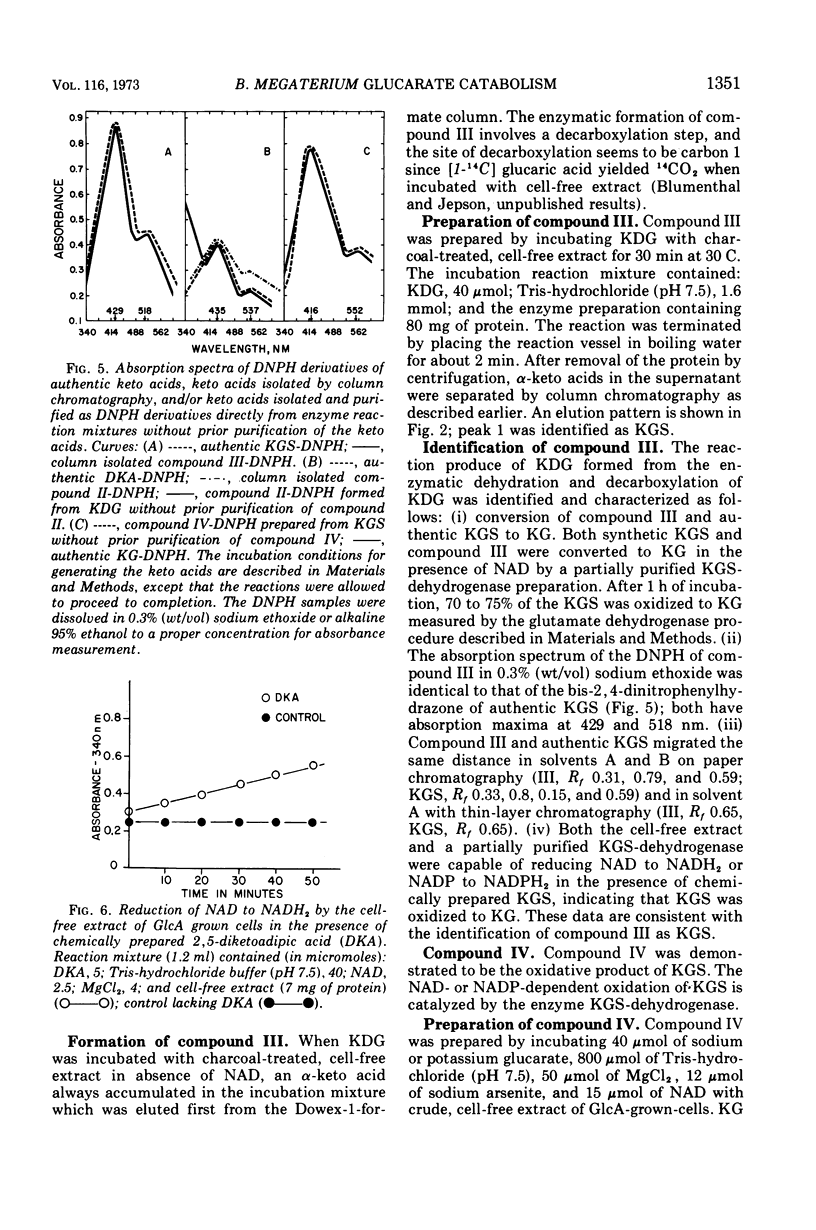
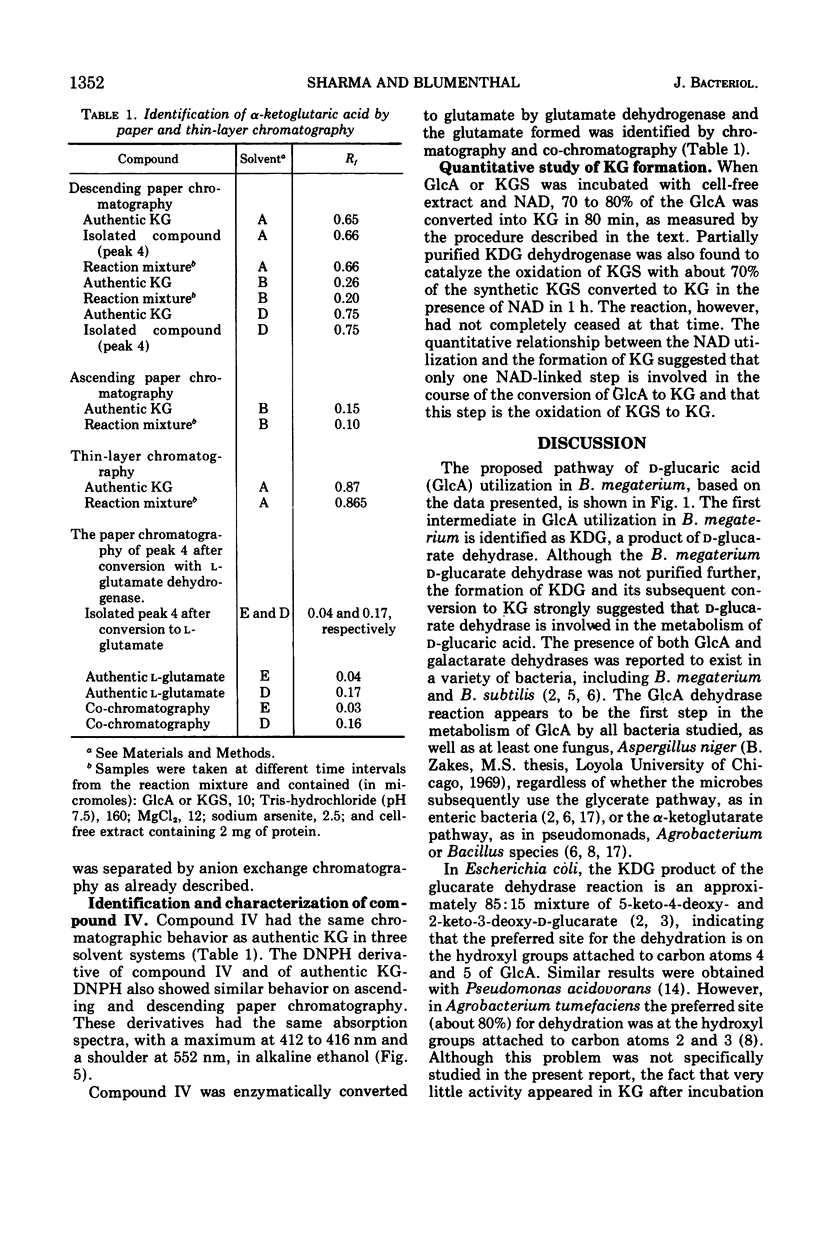
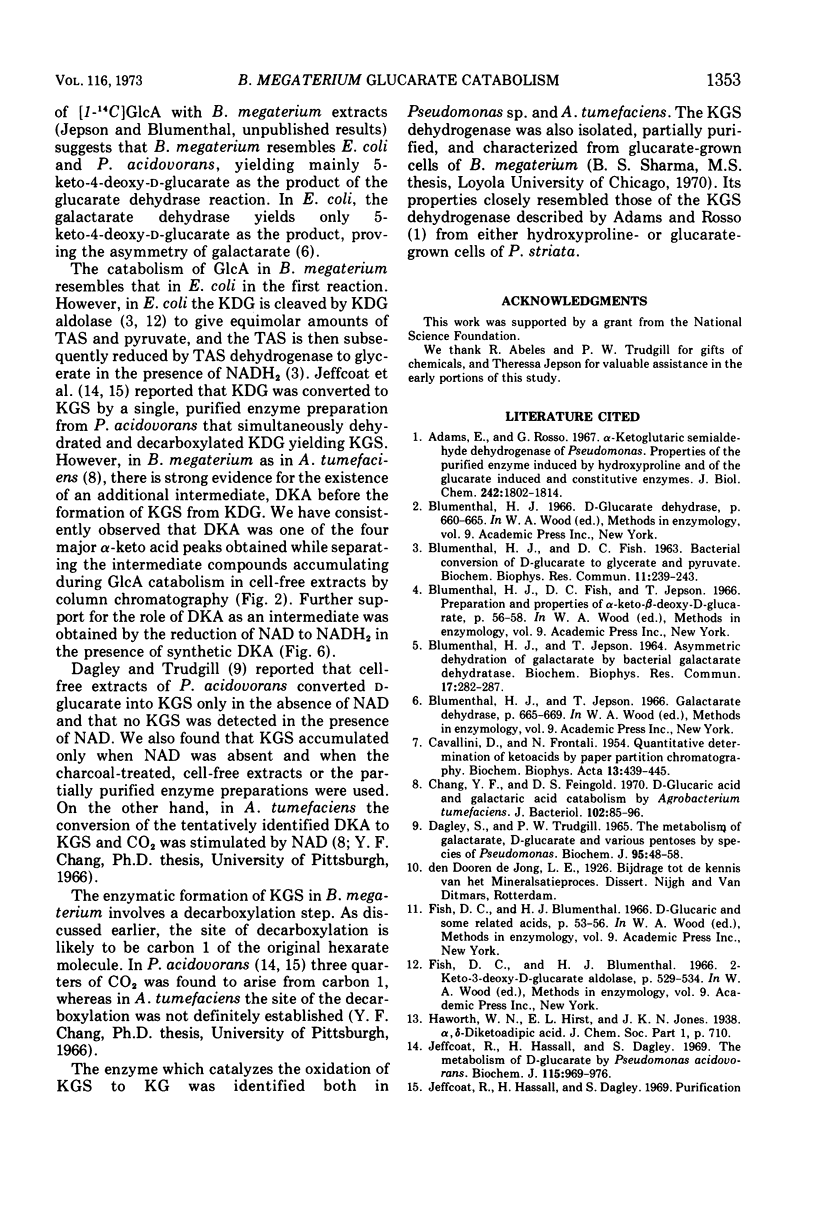
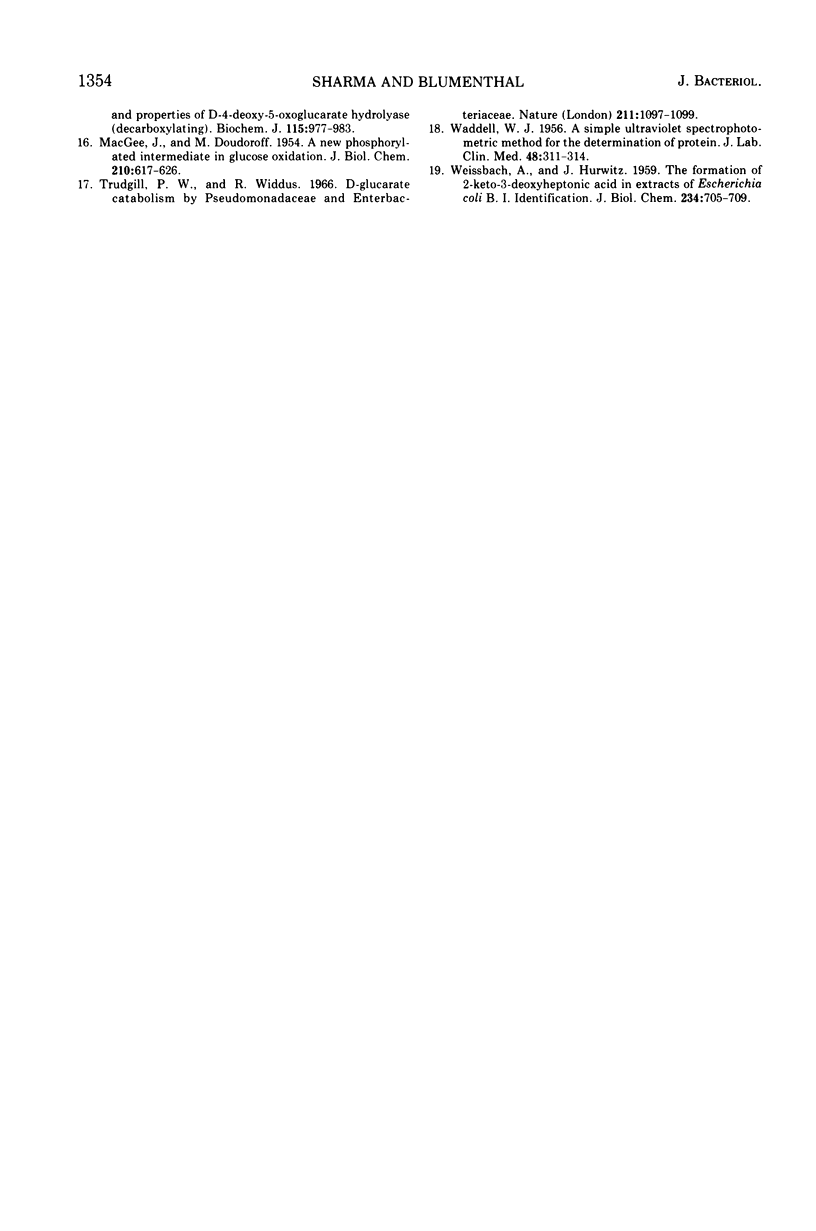
Selected References
These references are in PubMed. This may not be the complete list of references from this article.
- Adams E., Rosso G. Alpha-ketoglutaric semialdehyde dehydrogenase of Pseudomonas. Properties of the purified enzyme induced by hydroxyproline and of the glucarate-induced and constitutive enzymes. J Biol Chem. 1967 Apr 25;242(8):1802–1814. [PubMed] [Google Scholar]
- BLUMENTHAL H. J., FISH D. C. Bacterial conversion of D-glucarate to glycerate and pyruvate. Biochem Biophys Res Commun. 1963 May 3;11:239–243. doi: 10.1016/0006-291x(63)90341-3. [DOI] [PubMed] [Google Scholar]
- Blumenthal H. J., Jepson T. Asymmetric dehydration of galactarate by bacterial galactarate dehydratase. Biochem Biophys Res Commun. 1964 Oct 14;17(3):282–287. doi: 10.1016/0006-291x(64)90398-5. [DOI] [PubMed] [Google Scholar]
- CAVALLINI D., FRONTALI N. Quantitative determination of keto-acids by paper partition chromatography. Biochim Biophys Acta. 1954 Mar;13(3):439–445. doi: 10.1016/0006-3002(54)90351-0. [DOI] [PubMed] [Google Scholar]
- Chang Y. F., Feingold D. S. D-glucaric acid and galactaric acid catabolism by Agrobacterium tumefaciens. J Bacteriol. 1970 Apr;102(1):85–96. doi: 10.1128/jb.102.1.85-96.1970. [DOI] [PMC free article] [PubMed] [Google Scholar]
- DAGLEY S., TRUDGILL P. W. THE METABOLISM OF GALACTARATE, D-GLUCARATE AND VARIOUS PENTOSES BY SPECIES OF PSEUDOMONAS. Biochem J. 1965 Apr;95:48–58. doi: 10.1042/bj0950048. [DOI] [PMC free article] [PubMed] [Google Scholar]
- Jeffcoat R., Hassall H., Dagley S. Purification and properties of D-4-deoxy-5-oxoglucarate hydro-lyase (decarboxylating). Biochem J. 1969 Dec;115(5):977–983. doi: 10.1042/bj1150977. [DOI] [PMC free article] [PubMed] [Google Scholar]
- Jeffcoat R., Hassall H., Dagley S. The metabolism of D-glucarate by Pseudomonas acidovorans. Biochem J. 1969 Dec;115(5):969–976. doi: 10.1042/bj1150969. [DOI] [PMC free article] [PubMed] [Google Scholar]
- MACGEE J., DOUDOROFF M. A new phosphorylated intermediate in glucose oxidation. J Biol Chem. 1954 Oct;210(2):617–626. [PubMed] [Google Scholar]
- Trudgill P. W., Widdus R. D-glucarate catabolism by pseudomonadaceae and enterobacteriaceae. Nature. 1966 Sep 3;211(5053):1097–1099. doi: 10.1038/2111097a0. [DOI] [PubMed] [Google Scholar]
- WADDELL W. J. A simple ultraviolet spectrophotometric method for the determination of protein. J Lab Clin Med. 1956 Aug;48(2):311–314. [PubMed] [Google Scholar]
- WEISSBACH A., HURWITZ J. The formation of 2-keto-3-deoxyheptonic acid in extracts of Escherichia coli B. I. Identification. J Biol Chem. 1959 Apr;234(4):705–709. [PubMed] [Google Scholar]


